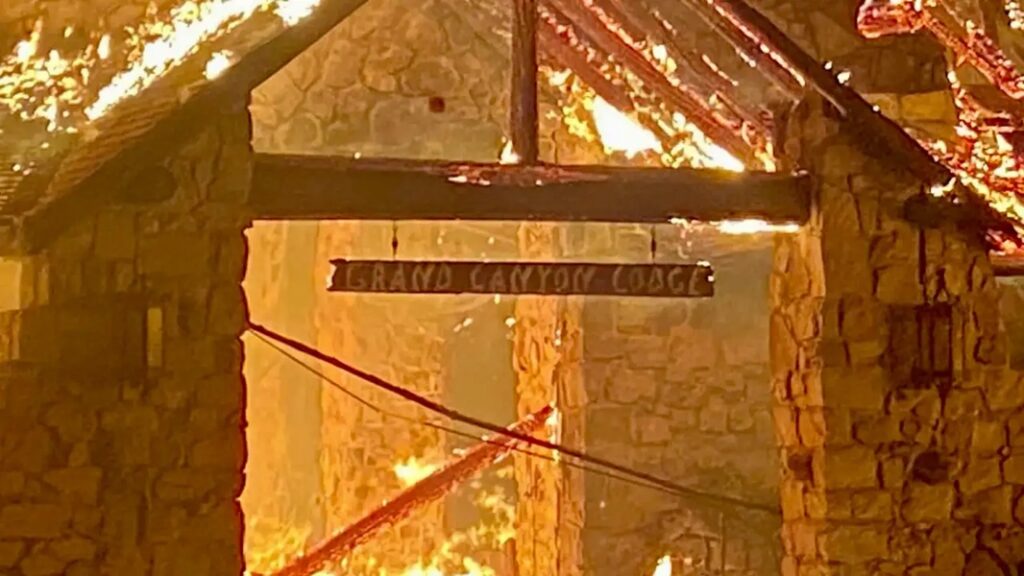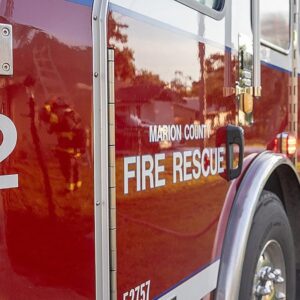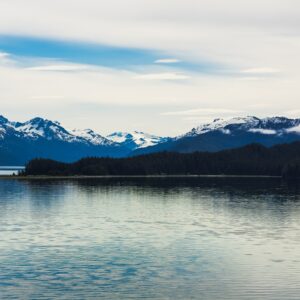The Grand Canyon Lodge fire has resulted in the loss of a cherished American landmark after a fast-moving wildfire swept through the North Rim of Grand Canyon National Park over the weekend. The Dragon Bravo Fire, fueled by scorching heat, dry conditions, and powerful winds, has now burned more than 5,000 acres, with officials confirming that the lodge is one of dozens of structures destroyed.
Historic Lodge Lost to Flames
Built in 1937, the Grand Canyon Lodge was the only in-park lodging available on the North Rim and held National Historic Landmark status. Its destruction marks a significant cultural and operational loss for the National Park Service (NPS) and visitors who treasured its rustic charm and panoramic views.
In addition to the lodge, 50 to 80 other structures have been confirmed destroyed, including the NPS administrative building and visitor service facilities.
Dragon Bravo and White Sage Fires Threaten Park Infrastructure
According to the NPS, the Dragon Bravo Fire remains the primary threat, but a second blaze, the White Sage Fire, is also encroaching upon the North Rim region. The dual wildfire threat has prompted emergency responses, including aerial bucket drops aimed at slowing the fire’s advance toward critical infrastructure.
However, firefighting efforts were complicated by a chlorine gas leak at a nearby water treatment facility. The chemical leak led to the temporary evacuation of fire crews from high-risk areas. NPS officials warned that chlorine gas poses a significant health hazard, especially in lower elevation areas like the Grand Canyon’s inner canyon, where it can quickly settle.
North Rim Closed for Remainder of 2025 Season
The Grand Canyon Lodge fire and surrounding hazards have forced the closure of the entire North Rim to visitors for the rest of the 2025 season, the NPS announced. This closure includes all recreational access, lodging, and visitor services.
Fortunately, no injuries or deaths have been reported. All park staff and residents were safely evacuated before the fire’s escalation, thanks to early warnings and coordinated response efforts.
AI Manipulation: What My Failed Podcast Taught Me About Trust and Transparency

Environmental and Tourism Impact
The destruction of the Grand Canyon Lodge not only impacts local tourism but also underscores the growing threat of climate-driven wildfires in iconic natural areas. With increased heat waves and prolonged droughts, wildfires are becoming more frequent and harder to contain, especially in regions like northern Arizona.
The National Park Service urges visitors and residents to stay informed via official sources such as NPS.gov and emergency broadcast systems. The situation is rapidly evolving, and air quality and safety conditions remain in flux due to fire and chemical hazards.
What This Means for Visitors
If you were planning a trip to the North Rim this year, it’s time to reconsider. All visitor access is suspended, and rebooking or refund information will be provided by authorized tour and lodging operators.
For alternative experiences, travelers can still explore the South Rim, which remains unaffected by the fires and offers a wide range of activities and accommodations.
Conclusion: A Devastating Loss and Ongoing Danger
The Grand Canyon Lodge fire is a stark reminder of how quickly natural treasures can be lost to wildfire. As investigations continue and suppression efforts persist, the loss of this historic site and vital infrastructure leaves a lasting impact on park history, ecology, and the visitor experience.
Stay safe, stay informed, and consider donating to wildfire relief efforts or supporting conservation initiatives dedicated to protecting America’s national parks.






